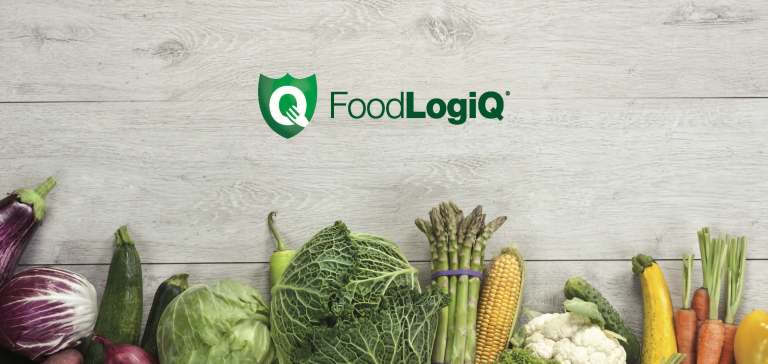Getting food from harvest to mouth, from field to fork may just be the oldest supply chain there is.
And as far as supply chains go, we’ll venture to say it could benefit from a technology upgrade.
Consider the fact that there’s been no shortage of headlines centered around outbreaks, tainted lettuce and fast food offerings. Quality control becomes paramount — right up until and when the produce hits the grocer’s shelves or the meal kit gets delivered or the restaurant serves the soup. In other words, the focus is on the end user’s/consumer’s safety, which is no small task when supply chains are global in scope, and perishables can travel thousands of miles.
One firm, FoodLogiQ, a software as a service (SaaS) provider, seeks to boost transparency in the food supply chain, offering technology that improves traceability from end to end, with focus on compliance.
In an interview with PYMNTS, Katy Jones, chief marketing officer of the company, agreed with the notion that, when it comes to food, supply chain management exists in an analog world in need of digital change, where visibility is limited.
In fact, as Jones noted, the typical levels of visibility extend to what she termed “one up and one back” — as in, each link in the supply chain knows who sent them a product (think, for example, of a crate of avocados) and where it may be headed (to a warehouse or a supermarket where the ripe ones get placed on a grocer’s shelves for consumers and the less picturesque ones get used “in the back of the house” for food prep).
Advertisement: Scroll to Continue
But now, said Jones, “there’s a lot of consumer pressure needing as much traceability as far back as they can go.” For various stakeholders in the chain, from the end eater to FoodLogiQ’s own corporate customers, “they want to not only have increased visibility into their supply chain, but ultimately they want to know if something went wrong … where it went wrong.”
This entails going beyond “one up and one back” and getting as far back in the chain to the “grower” level, to the beginning, as it were. The end goal, she said, aided by technology, is to “understand where that food came from, what is going in it and then, to make sure that what the [grocer or restaurant] brand promises can be backed up with a high level of verifiable information.”
Compliance, of course, remains top of mind and urgent in practice. Within FoodLogiQ’s Connect platform exist functions for tracking and reporting, with ease of communication between restaurant operators, food retailers and suppliers in order to manage documentation.
As Jones noted to PYMNTS, piecing invoices together to enhance the flow of information to figure out who is paying whom (and where food items have been and where they are headed) hardly leads to optimal traceability.
Though FoodLogiQ does not serve as a payments processor or operate in inventory management, Jones told PYMNTS the company seeks to position itself as a hub, where customers can gather a lot of data.
On the roadmap for 2018: information and documentation that rolls up via an application programming interface (API) into a starred rating system for suppliers, focused on quality control. If a supplier garners a three-star rating or below, said Jones, they may be taken out of the supplier network until they can get their ratings up.
The emergence of the Internet of Things also offers a wealth of possibility in the supply chain management, Jones told PYMNTS. She pointed to the company’s recent partnership with Testo, where the latter’s quality test and measurement equipment, of the portable kind, are coupled with FoodlogiQ’s Connect platform to take the temperature of everything from cooking oil to the salad bar “and everything in between,” said Jones, “including the transportation … anywhere you actively need to know that the cold stuff stays cold and the hot stuff stays hot.”
At the highest level, said Jones, quality assurance is something with which all stakeholders — especially small to mid-sized firms in niche markets — grapple. As supply chains lengthen, they have to verify the food safety practices of foreign suppliers and may have to demonstrate compliance at a moment’s notice to regulators. The information can be gathered and kept in a centralized place via a centralized platform, she said. The fast-growing burger chain that is establishing a foothold in Europe needs to know that the burger will taste the same in an international market as it does in Durham, N.C.
To maintain consistency, communication is key. If there are quality control issues, said Jones, a quality incident tracking system allows for a fast resolution of issues. For example, if tomatoes come in bruised to a location, the party who received them can take a picture, with a document accompanying that list, send it to the supplier and even request a credit.
Or, going back even further in the chain, “with technology and that last mile of traceability, scanning receipts so you know exactly which lot and which product got delivered to which location,” said Jones, “you can know with a great deal of accuracy, ‘This is the lot that was affected.’ It went to these … restaurants.” Follow-up commences with automated phone calls, texts and emails that can create a digital paper trail.
With improved communications, said Jones, companies generally see a 50 percent reduction in the time spent managing and capturing supplier data and a 66 percent reduction in the time spent capturing quality incidents.
“It’s a surprise for an industry since the beginning of time how archaic” some processes are, Jones told PYMNTS, adding that, “there’s a tremendous amount of hunger for technology in this space … so many companies just need to get out of spreadsheets,” she said.

